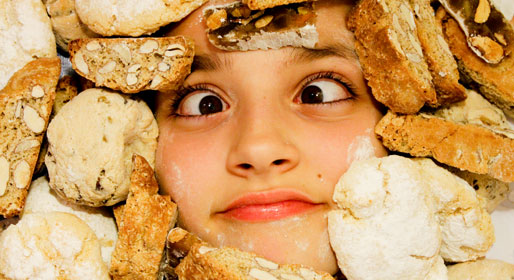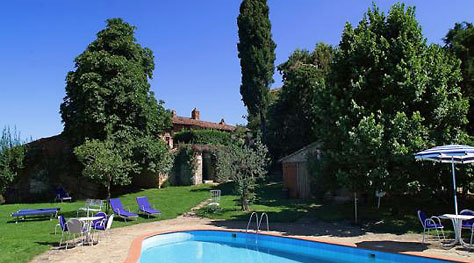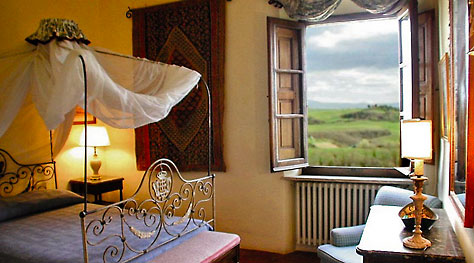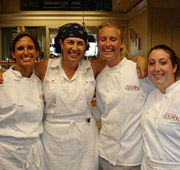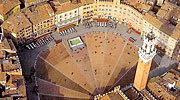My Sweet Siena
Panforte, Ricciarelli, Cavallucci & Cantucci: 4 more reasons to love Siena
Blissfully traffic-free streets lined with towering palazzi, more often than not adorned with the colorful flags and elaborate stems of the contrada, or district, in which they are located; a medieval maze of chapels, churches and banks (this is where the world's first bank was founded way back in 1472 and there's a branch on almost every corner of every street); a magnificent black and white striped cathedral, which, had it not been for the plague, would have been twice the size of the one in Rome; and last, but by no means least, the enormous shell-shaped Piazza del Campo, which provides the spectacular setting for the city's twice-yearly horse race.
Siena Pass
One pass to the Cathedral of Siena complex
Get your tickets now!
This is Siena, the Tuscan art city which kindly adopted me 20 years ago. But this article is not about the Palio or the incredibly well-conserved medieval architecture or the awesome gothic masterpieces which fill the city's museums. It's about the thing I love most of all about Siena: i dolci!
Panforte, Ricciarelli, Cavallucci, Cantucci: since the middle ages, Siena has been producing some of the best cakes and biscuits in the world!
PANFORTE
Sapori, Parenti, Fiori, Pepe: there's a reason why many of Siena's historic pharmacies have the same name as the principal producers of panforte, a typical Sienese cake made with flour, candied fruit, marzipan, almonds and nutmeg, and that's because the city's apothecaries were making and selling the delicious stuff before anyone else!
In fact, as soon as spices started arriving in Tuscany, in the 13th century, Siena's pharmacists began adding them to bread: a wonderfully sweet bread, enriched with pepper, cinnamon and nutmeg, and which only the very wealthiest could possibly afford.
By the 19th century, Siena's pharmacies all had their own factory, churning out industrial quantities of panforte and other Sienese sweets.
If you purchase your panforte in a pastry shop, bear in mind that you don't necessarily have to buy a whole "round". Like cheese, Siena's incredibly rich, deliciously dense and powerfully perfumed panforte, is sold by the gram too
RICCIARELLI
The first Italian confectionary product to have been awarded IGP status (in March 2010), Siena's Ricciarelli were being sold by the city's chemists as early as the 15th century.
Debate still rages as to who exactly invented the delicacy, which were first known as the "little marzipans according to the Sienese custom".
Some say the sweet-toothed Montecelso nuns were the first to come up with the recipe. Others claim Ricciarelli were introduced by Ricciardetto della Gherardesca of Volterra, on his return from the crusades.
Want a tip from someone who's had more than her fair share of Ricciarelli?
If you're in Siena, don't bother with the boxed Ricciarelli in the shops - buy them freshly-baked from La Nuova Pasticceria (in Via G.Duprè, just off the Piazza del Campo) or the Panificio Il Magnifico, in Via del Paradiso, near to the baptistery instead.
CAVALLUCCI
The first "dolce" I sunk my teeth into when I arrived in Siena was a cavalluccio. Whilst, admittedly, I chose this cake because, compared to the dainty Ricciarelli, the chunky cavallucci were considerably bigger and cheaper (I was a hungry, hard-up student at the time), the subsequent explosion of honey, anise seeds, nuts, ginger and black pepper which engulfed my taste buds was, quite simply, priceless.
Cavallo, or horse, is one of the first words foreigners studying in equestrian-obsessed Siena learn, and I can distinctly remember wondering whether these cakes were called cavallucci because they looked, to me at least, just like dusty horse droppings.
I was, of course, wrong. The name "cavalluccio", first recorded mention of which dates back to the 16th century, derives from the cake's supposed resemblance to a baby foal.
CANTUCCI
I love these crunchy little devils, which you'll find in just about every restaurant, bakery, pastry shop, delicatessen and supermarket in Siena. Not only are they delicious, they're also surprisingly low in calories (well, compared to Ricciarelli and Panforte they are anyway!).
Cantucci di Siena (not to be confused with the slightly smaller and considerably sweeter Biscotti di Prato), are prepared with a simple mixture of flour, sugar, egg, butter, lemon peel and a generous spinkling of whole almonds and are traditionally served at the end of a meal, with a glass of Vin Santo, Siena's dessert wine par excellence.
Yes, even in the poshest of restaurants, it's perfectly acceptable for you to dunk your Cantucci into your wine. In fact, people will think you're a bit wierd if you don't!
PASTRY SHOPS WORTH POPPING INTO
- Panificio Il Magnifico (Via dei Pellegrini, 27)
- La Nuova Pasticceria (Via G.Duprè, 37)
- Pasticceria Buti (Via Vittorio Emanuele II, 53)
- Pasticceria San Girolamo (Via San Girolamo 9/11)
Photos by Anna Milano and Ivan Barreca
Our Insider is
Could you be our next Insider? Share your love of Italy by contributing to ItalyTraveller! See how!
Food & Drink
Main destinations
Hotels in the area
- Useful links
- Tuscany
- Siena Hotels
- Tuscany (all hotels)

